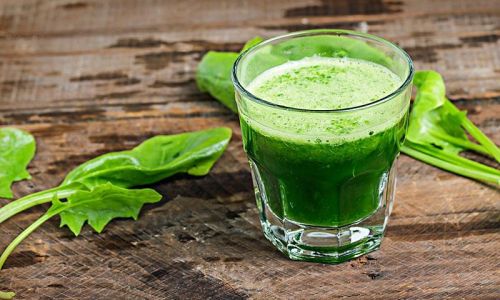Table of content
Spinach juice has gained immense popularity in recent years as a nutrient-packed beverage that offers a wide range of health benefits. From boosting energy levels to enhancing skin health and supporting digestion, this vibrant green drink is a favorite among health enthusiasts, athletes, and anyone looking to incorporate more greens into their diet. While store-bought options are available, making spinach juice at home ensures freshness, control over ingredients, and the ability to customize flavors to suit your taste. This comprehensive guide will walk you through everything you need to know to create delicious and wholesome spinach juice, from selecting the right ingredients to troubleshooting common issues.

Why Spinach Juice?
Before diving into the recipe, it’s essential to understand why spinach juice deserves a spot in your daily routine. Spinach (Spinacia oleracea) is a leafy green vegetable renowned for its exceptional nutritional profile. It is rich in vitamins A, C, K, and folate, as well as minerals like iron, calcium, and magnesium. Additionally, spinach contains antioxidants such as lutein and zeaxanthin, which support eye health, and nitrates that may improve blood flow and athletic performance.
Juicing spinach allows you to consume a concentrated dose of these nutrients in a easily digestible form. Unlike whole spinach leaves, which require chewing and digestion, juicing breaks down the plant cell walls, making the nutrients more bioavailable. This makes spinach juice an excellent option for individuals with sensitive stomachs or those who struggle to eat large quantities of greens.
Ingredients and Equipment You’ll Need
To make spinach juice, you’ll need a few basic ingredients and tools. Here’s a breakdown:
Ingredients
- Fresh Spinach: Choose organic spinach if possible to avoid pesticide residues. Baby spinach is milder in flavor, while mature spinach has a slightly earthier taste.
- Liquid Base: Water, coconut water, or unsweetened almond milk can be used to thin the juice.
- Optional Flavor Enhancers:
- Fruits: Apples, lemons, limes, oranges, or berries add sweetness.
- Herbs and Spices: Ginger, mint, or cilantro for a refreshing twist.
- Vegetables: Cucumber, celery, or kale for added nutrients.
- Sweeteners (if needed): A date, a drizzle of honey, or a pinch of stevia can balance bitterness.
Equipment
- Juicer: A masticating or centrifugal juicer works best. Masticating juicers extract more juice and preserve nutrients better but are pricier. Centrifugal juicers are faster and more affordable.
- Blender: If you don’t own a juicer, a high-speed blender can be used, followed by straining the mixture through a nut milk bag or cheesecloth.
- Cutting Board and Knife: For prepping ingredients.
- Strainer or Cheesecloth: Essential if using a blender.
- Glass or Pitcher: To serve or store the juice.
Step-by-Step Guide to Making Spinach Juice
Selecting and Preparing Spinach
- Choosing Spinach: Look for crisp, vibrant green leaves. Avoid wilted or yellowing spinach, as it may taste bitter. Organic spinach is ideal to minimize exposure to chemicals.
- Washing Thoroughly: Rinse spinach under cold water to remove dirt, debris, or insects. Soak leaves in a bowl of water for 5–10 minutes if they’re particularly gritty.
- Drying: Pat the spinach dry with a clean kitchen towel or use a salad spinner. Excess moisture can dilute the juice.
Prepping Additional Ingredients
- Fruits and Vegetables: Wash and chop them into juicer-friendly sizes. For example, peel citrus fruits to remove the bitter pith, and core apples.
- Herbs and Spices: Peel ginger (if using) and roughly chop herbs.
Juicing Method
Using a Juicer:
- Start by feeding a handful of spinach into the juicer’s chute. Alternate with softer ingredients (like citrus) or harder ones (like apples or ginger) to ensure smooth juicing.
- Collect the juice in a glass or pitcher.
- Stir gently to mix flavors.
Using a Blender:
- Add spinach, liquid base, and any additional ingredients to the blender.
- Blend on high speed until smooth (1–2 minutes).
- Place a nut milk bag or cheesecloth over a bowl and pour the mixture through. Squeeze to extract as much juice as possible.
Adjusting Flavors and Consistency
- Thinning: Add water or coconut water if the juice is too thick.
- Sweetening: Taste the juice and add a sweetener if the bitterness is overwhelming.
- Enhancing Flavor: Squeeze in lemon or lime juice for a tangy kick, or add a pinch of salt to balance flavors.
Serving and Storing
- Serving Immediately: Spinach juice is best consumed fresh, as nutrients degrade over time.
- Storing: If needed, store in an airtight glass container in the refrigerator for up to 24 hours. Avoid plastic, as it can leach chemicals into the juice.
Creative Variations and Add-Ins
One of the joys of making spinach juice at home is the ability to experiment with flavors. Here are some ideas to keep your drinks exciting:
- Tropical Twist: Combine spinach, pineapple, coconut water, and a splash of lime.
- Green Detox: Mix spinach, kale, cucumber, celery, and lemon.
- Berry Boost: Add strawberries, blueberries, and a banana for natural sweetness.
- Spicy Kick: Include a thumb-sized piece of ginger and a dash of cayenne pepper.
- Creamy Version: Blend spinach with avocado, almond milk, and a touch of honey for a smoothie-like texture.
Health Benefits of Spinach Juice
Regular consumption of spinach juice offers numerous health advantages:
- Improved Digestion: Spinach is high in fiber, which supports gut health and prevents constipation.
- Enhanced Immunity: Vitamin C and antioxidants strengthen the immune system.
- Bone Health: Calcium and vitamin K contribute to strong bones and teeth.
- Skin Radiance: Vitamin A promotes cell turnover, reducing acne and dullness.
- Hydration: Spinach has a high water content, aiding in hydration when juiced with coconut water or cucumber.
- Detoxification: Chlorophyll in spinach helps cleanse the liver and blood.
Common Mistakes to Avoid
Even seasoned juicers make errors. Here’s how to sidestep them:

- Overloading the Juicer: Feed ingredients slowly to prevent clogs.
- Ignoring Bitterness: Balance earthy flavors with citrus or sweet fruits.
- Using Stale Produce: Fresh ingredients yield the best taste and nutrients.
- Not Cleaning the Juicer: Rinse parts immediately after use to prevent residue buildup.
- Overconsumption: Start with small servings (4–6 ounces) to avoid digestive discomfort.
Troubleshooting Guide
- Juice is too bitter: Add a sweet fruit like apple or pear.
- Juice separates quickly: Stir before serving, or blend with a frozen banana for a smoother texture.
- Juicer isn’t extracting enough liquid: Check if the produce is too dry, or if the juicer needs maintenance.
FAQs About Spinach Juice
Q: Can I use frozen spinach?
A: Fresh spinach is ideal, but frozen spinach can be used if thawed and drained properly. However, frozen spinach may have a slightly mushier texture.
Q: How much spinach should I use per serving?
A: A typical serving uses 2–3 cups of fresh spinach. Adjust based on your taste preferences.
Q: Is spinach juice safe for kids?
A: Yes, but dilute it with water or fruit juice to make it more palatable. Consult a pediatrician if your child has dietary restrictions.
Q: Can I drink spinach juice daily?
A: Moderation is key. Start with 4–6 ounces daily and monitor how your body reacts. Excessive intake may lead to digestive issues.
Q: Does juicing spinach remove fiber?
A: Yes, juicing removes insoluble fiber. To retain fiber, blend spinach into smoothies instead.
Conclusion
Making spinach juice at home is a rewarding way to elevate your health and enjoy the earthy, refreshing taste of this superfood. Whether you prefer it straight up or blended with complementary flavors, the key is to experiment and find what suits your palate. By using fresh ingredients, maintaining equipment properly, and avoiding common pitfalls, you can create a nutrient-dense beverage that powers your day. So, grab your juicer, stock up on spinach, and start sipping your way to better health!





0 comments